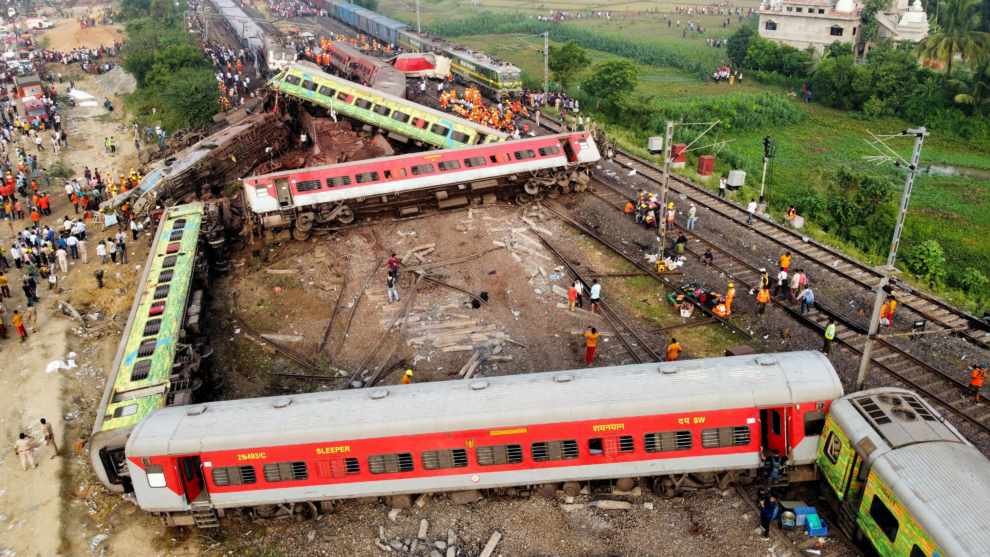There are many unanswered questions on what exactly led to a deadly multiple train collision in India on Friday evening that killed at least 288 people and injured more than 800.
Two express passenger trains and a freight train were involved in a “three-way accident” near a small station in eastern state of Odisha, according to reports. One of them collided with the stationary freight train, and its coaches flipped over to a third track, causing an incoming train to derail. A preliminary report indicates that the accident was the result of signal failure.
Only a comprehensive inquiry will help uncover the truth behind the incident. Yet it has once again ignited fresh concerns regarding railway safety in India.
India’s expansive railway system – one of the world’s largest – carries some 25 million passengers every day across a countrywide network of tracks spanning more than 100,000km (62,000 miles). Some 5,200km of new tracks were laid last year, according to Railway Minister Ashwini Vaishnaw. Also 8,000km of tracks were being upgraded every year, the minister said.
Mr Vaishnaw recently revealed in an interaction that the majority of the tracks were undergoing upgrades to accommodate trains running at speeds of up to 100 km/h, a substantial portion was being enhanced for speeds of up to 130km/h, and a significant segment was being prepared for the high speeds of up to 160km/h.
Clearly, this is part of the government’s plans to run faster trains across the country – a genuinely high-speed line is separately being built between the financial capital of Mumbai and the city of Ahmedabad.
Yet, derailment continues to be a “bugbear for the railways”, a former Railway Board chairman, Vivek Sahai, told me. A train can derail for a number of reasons – “a track could be ill-maintained, a coach could be faulty, and there could be an error in driving”.
















